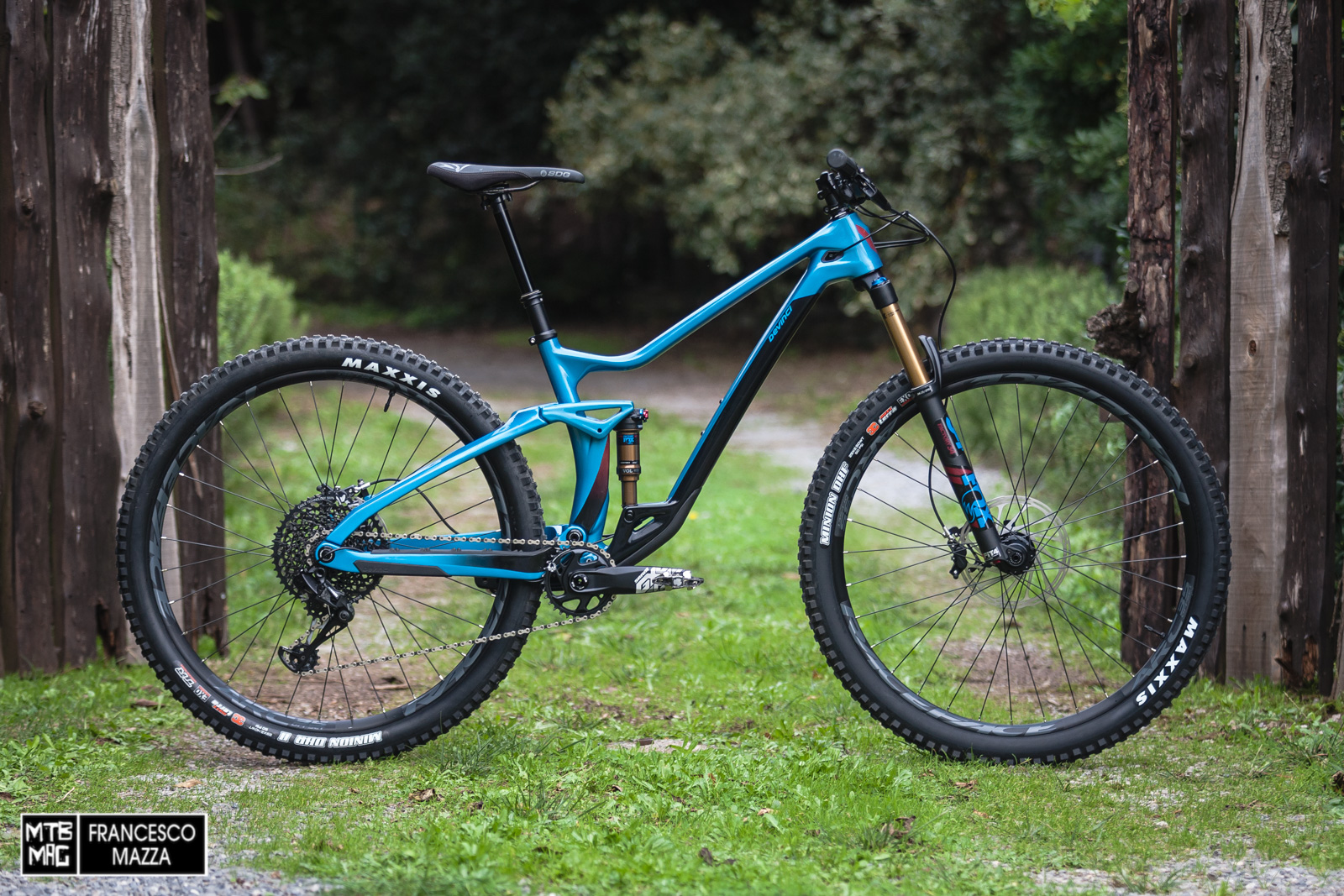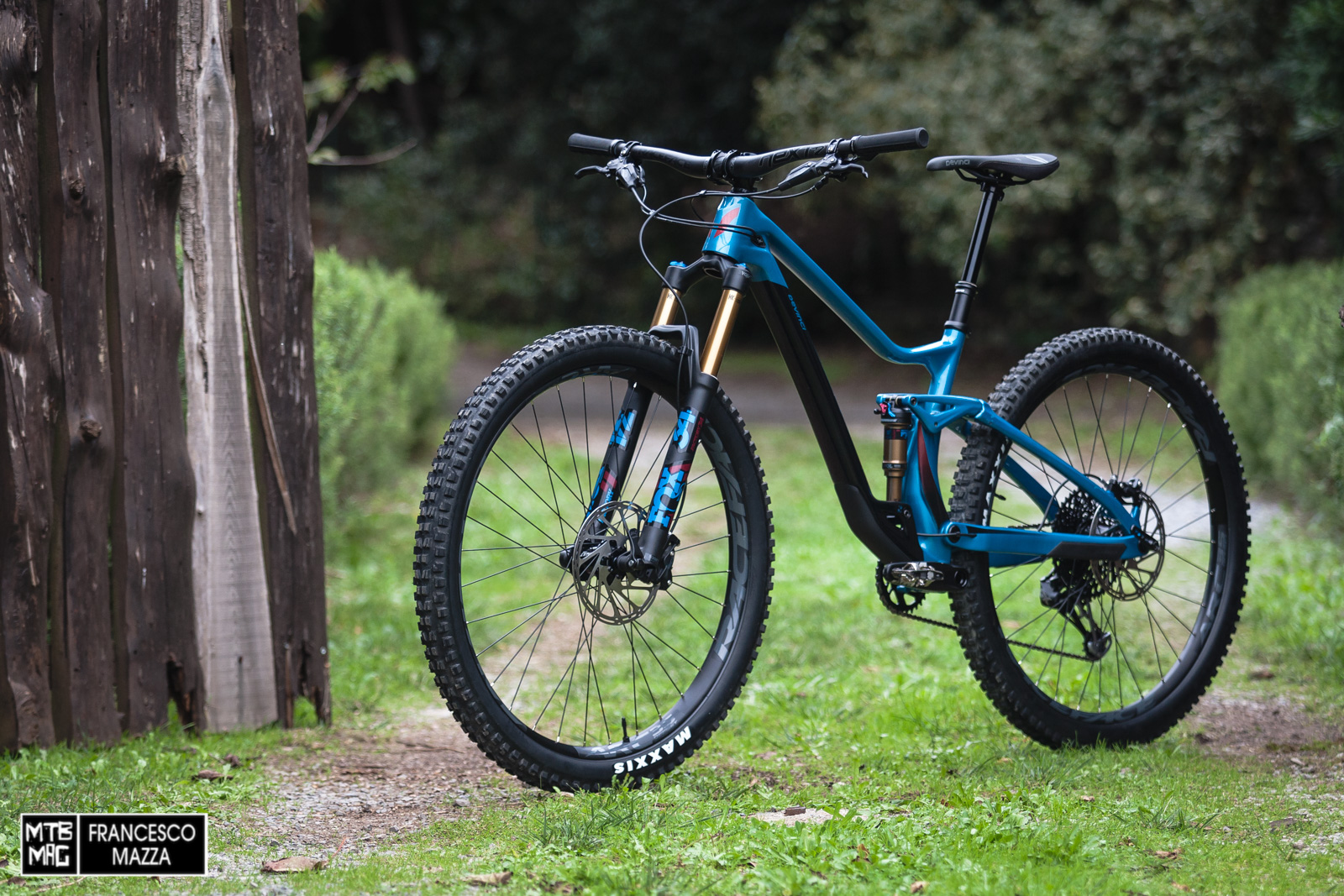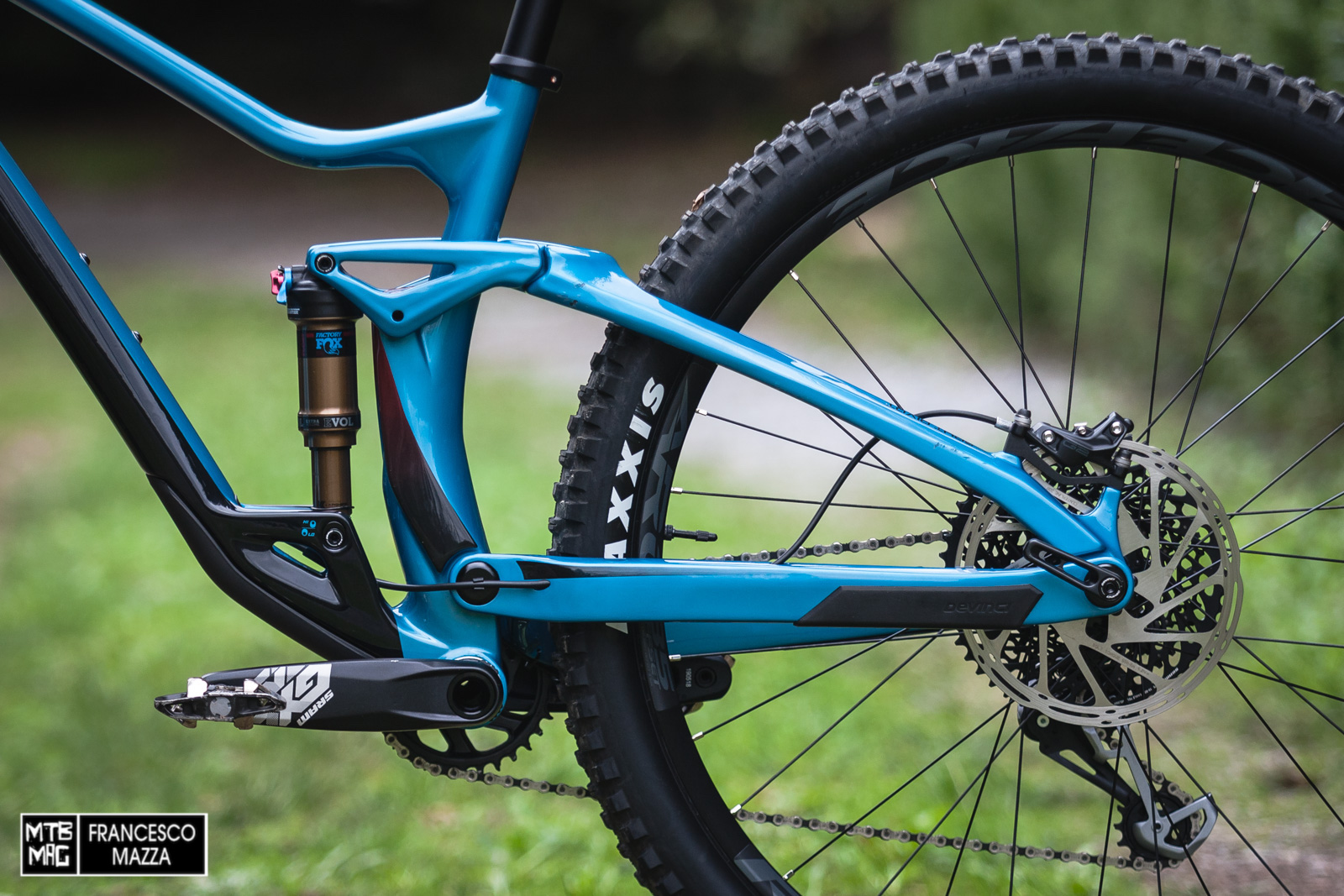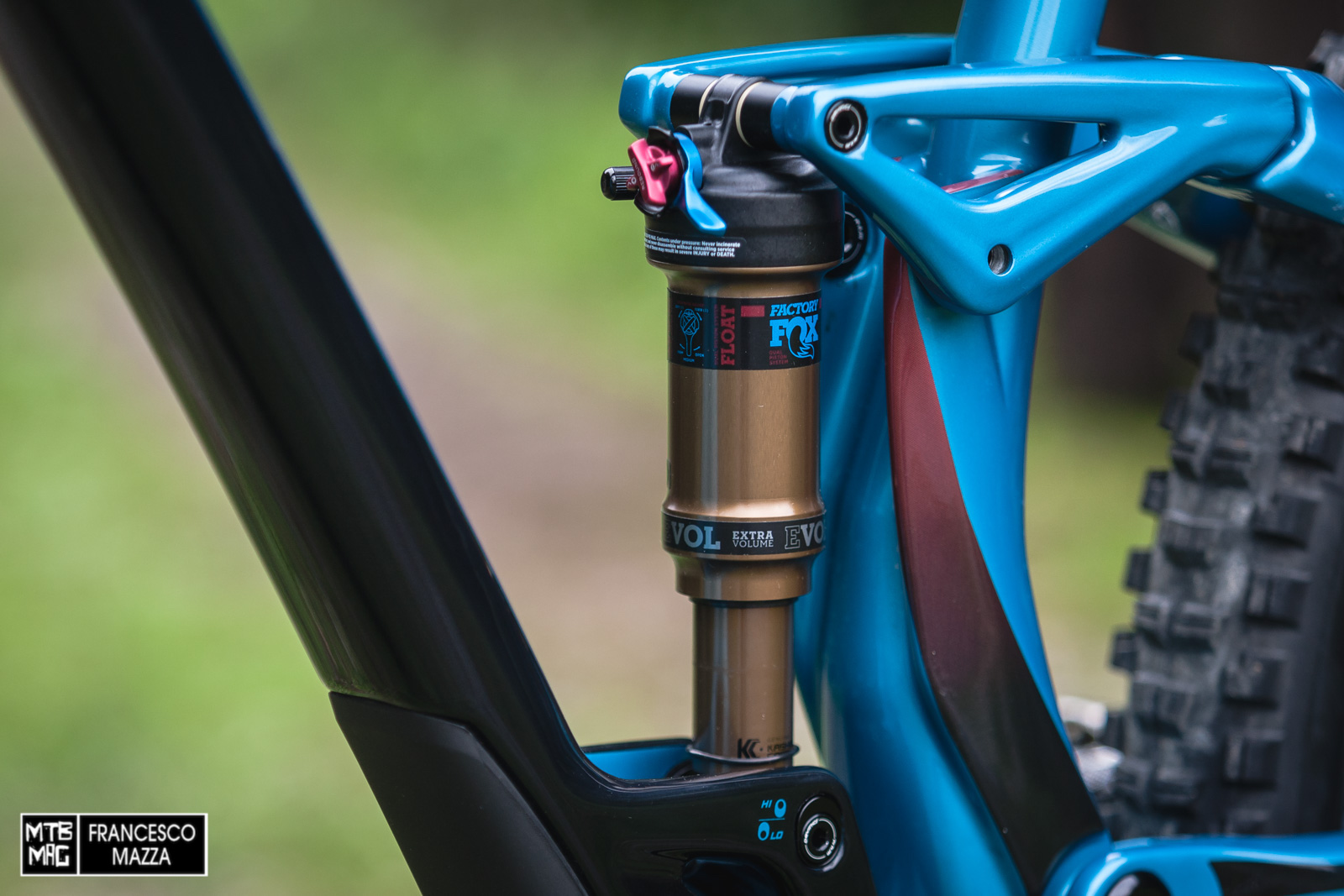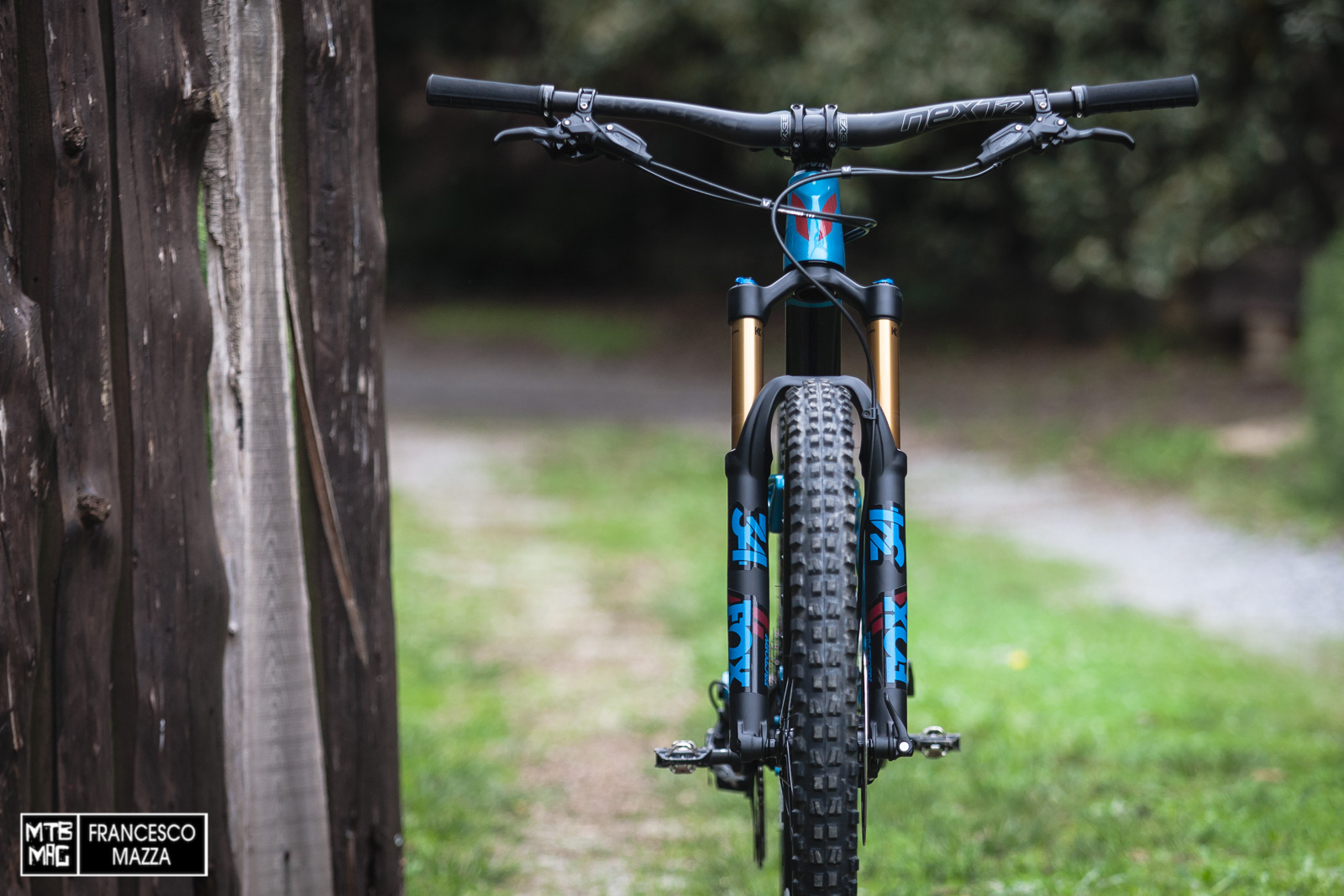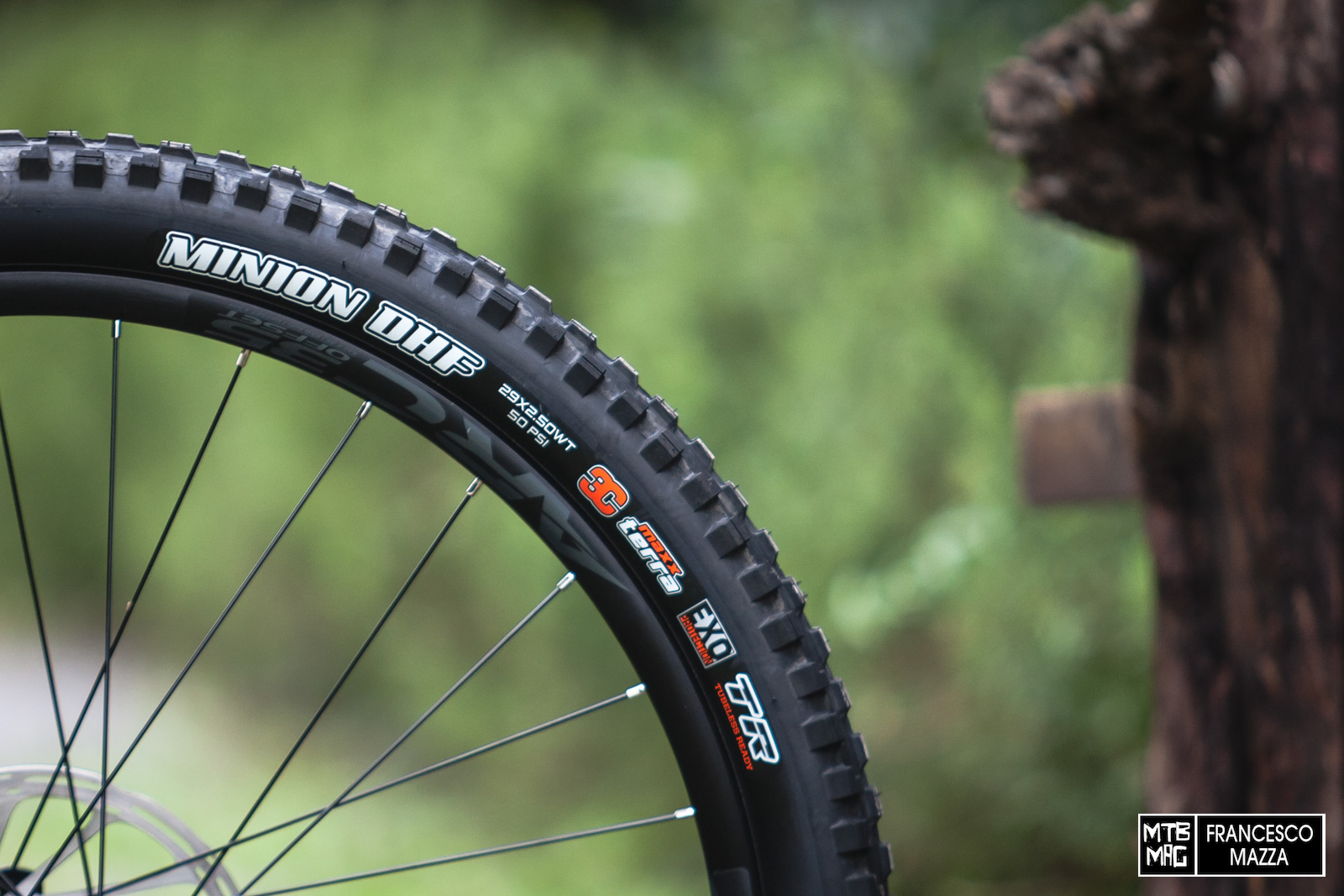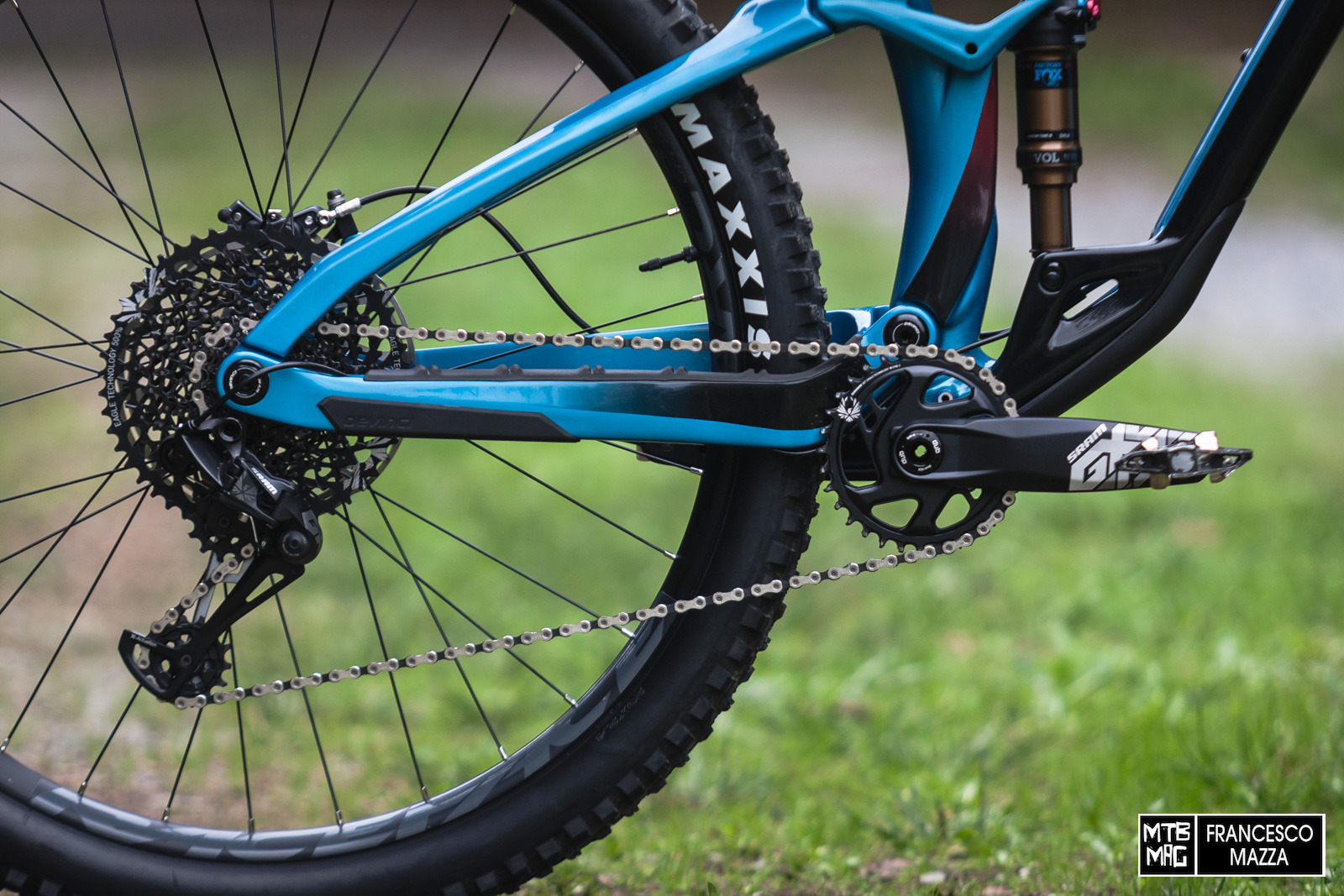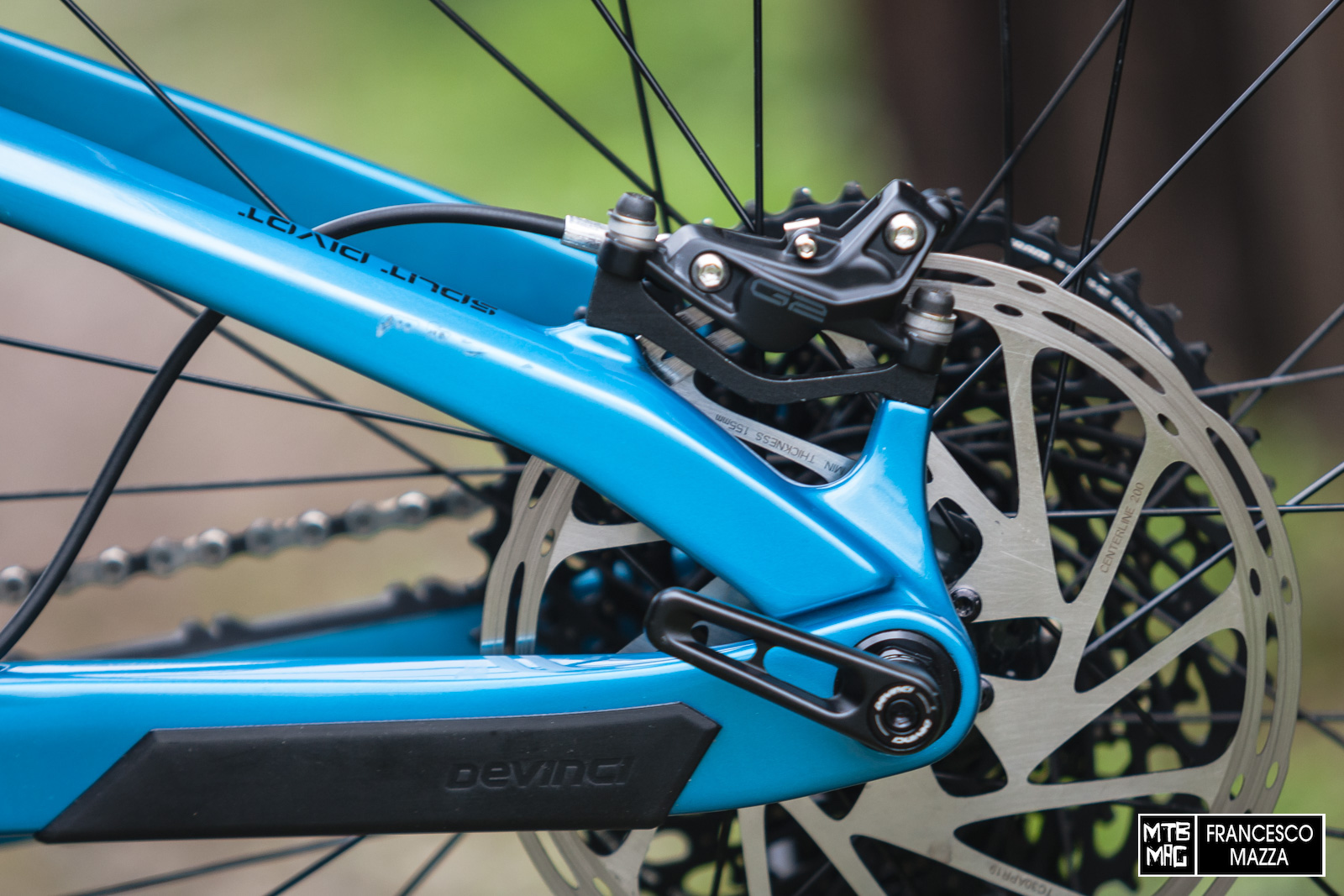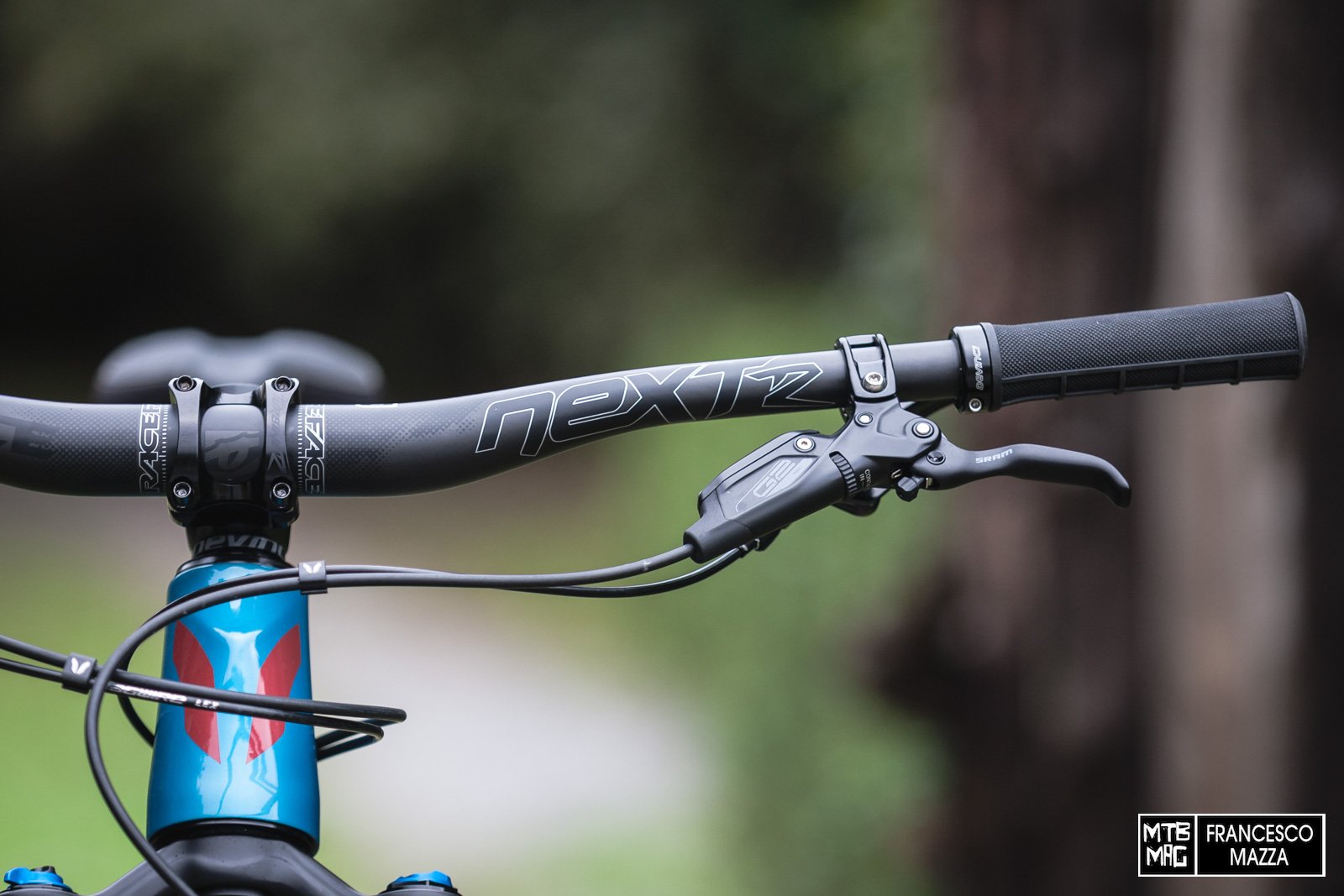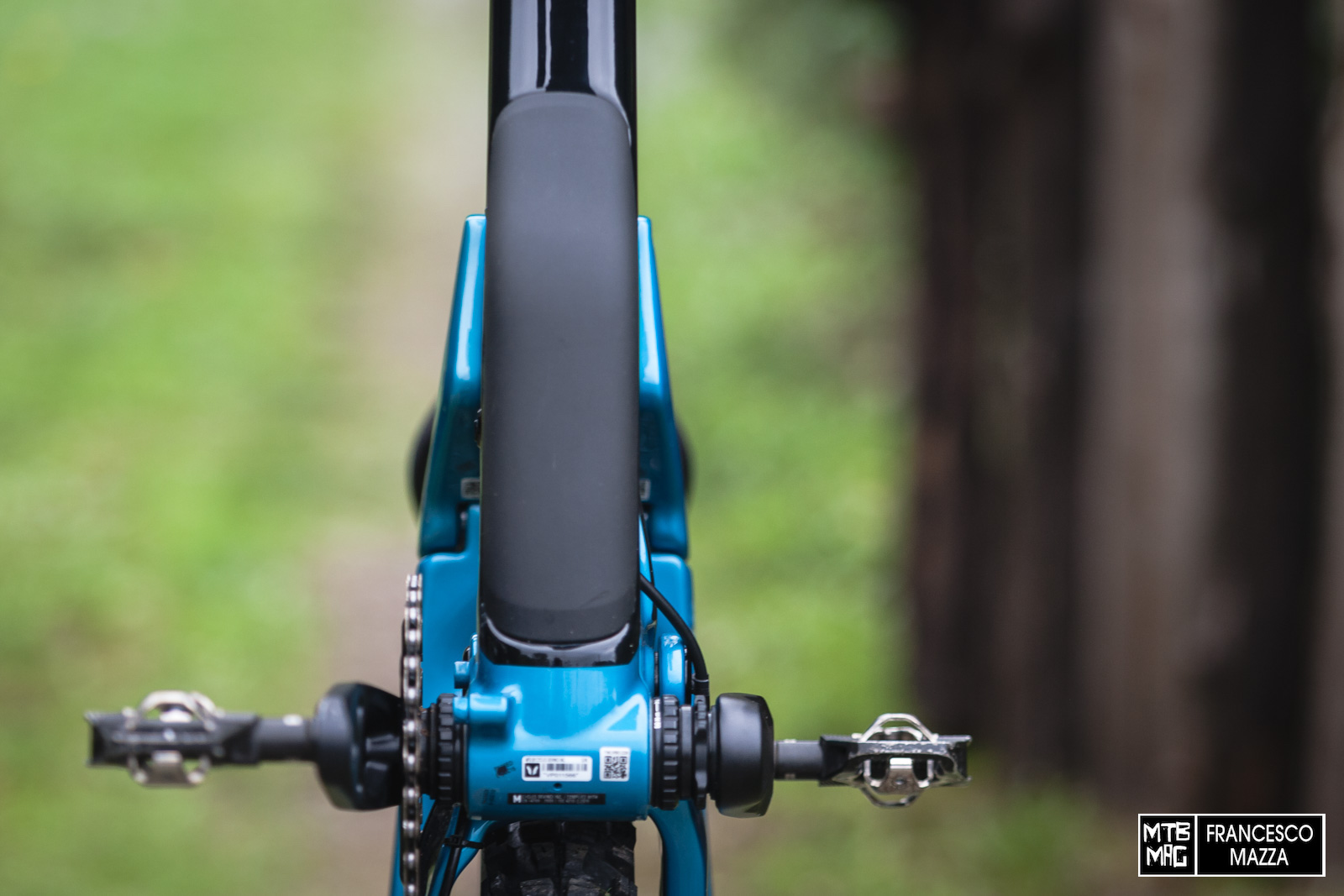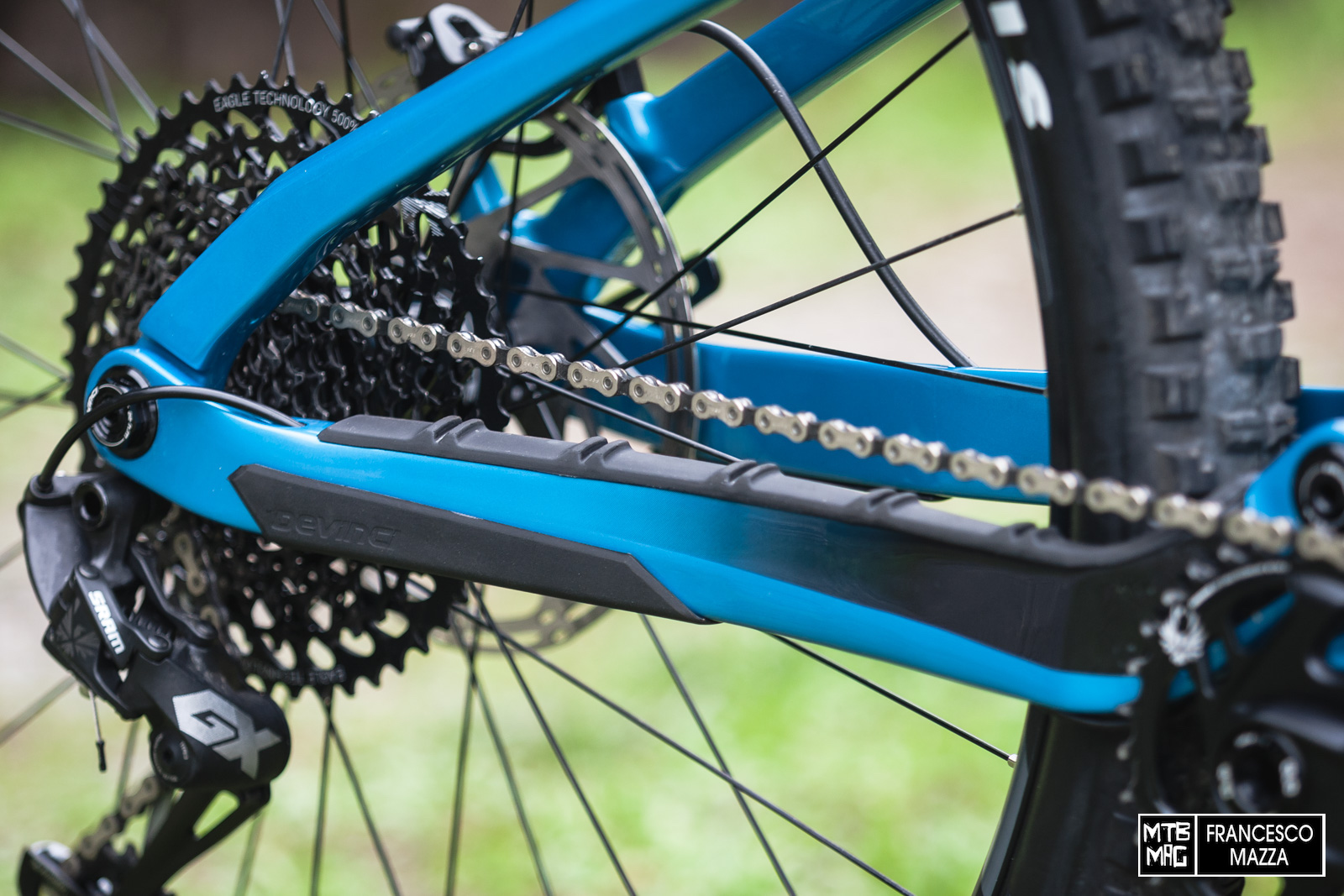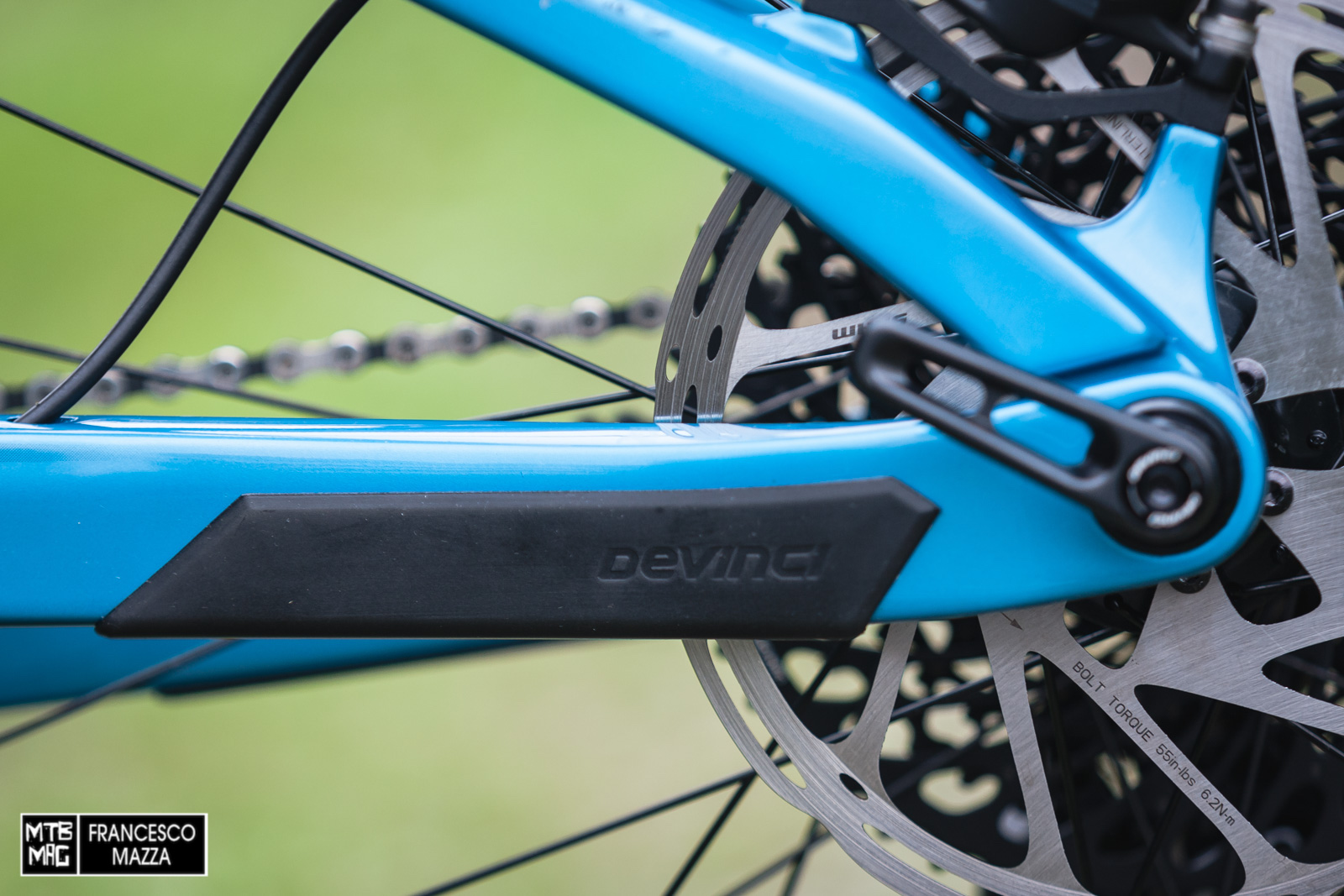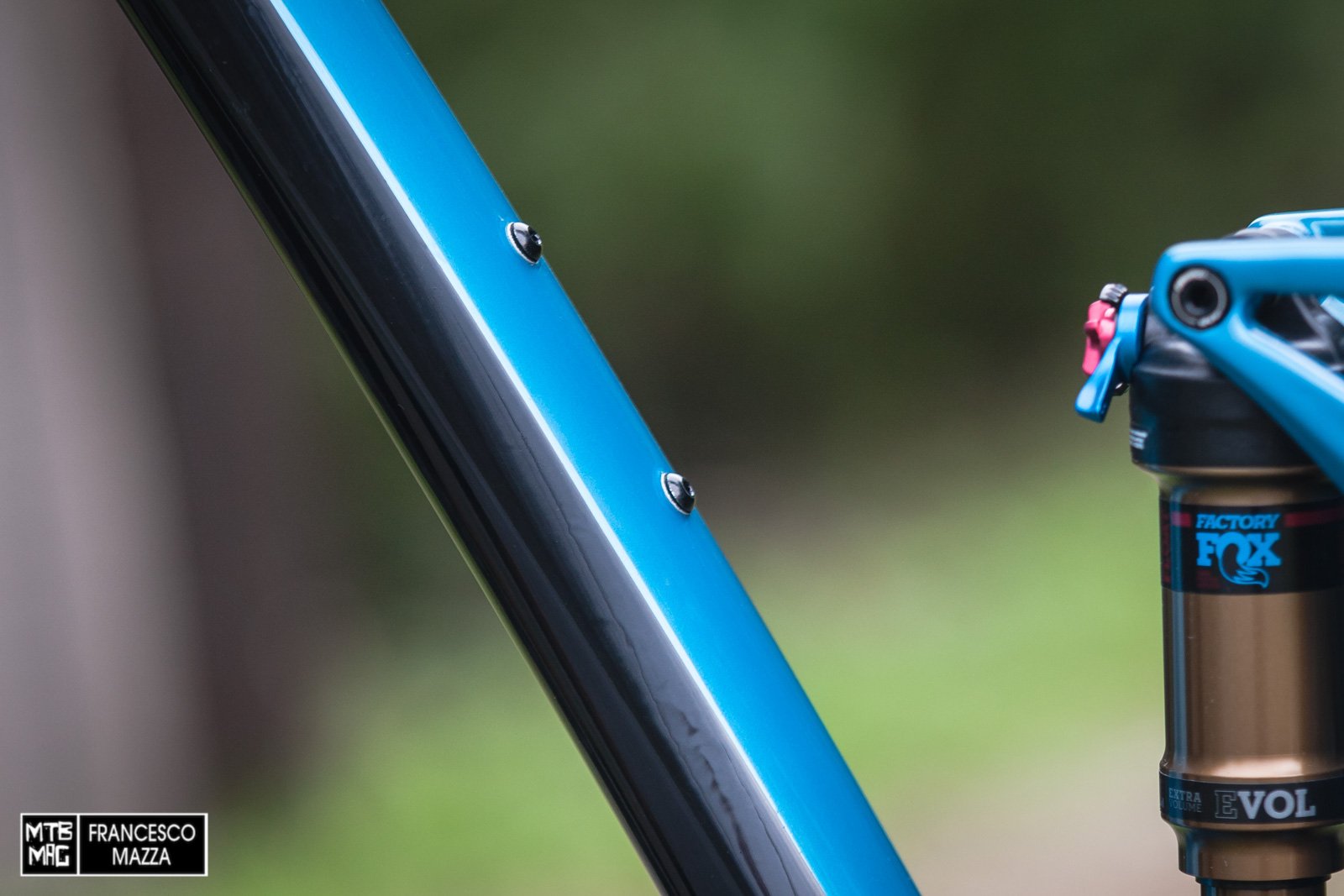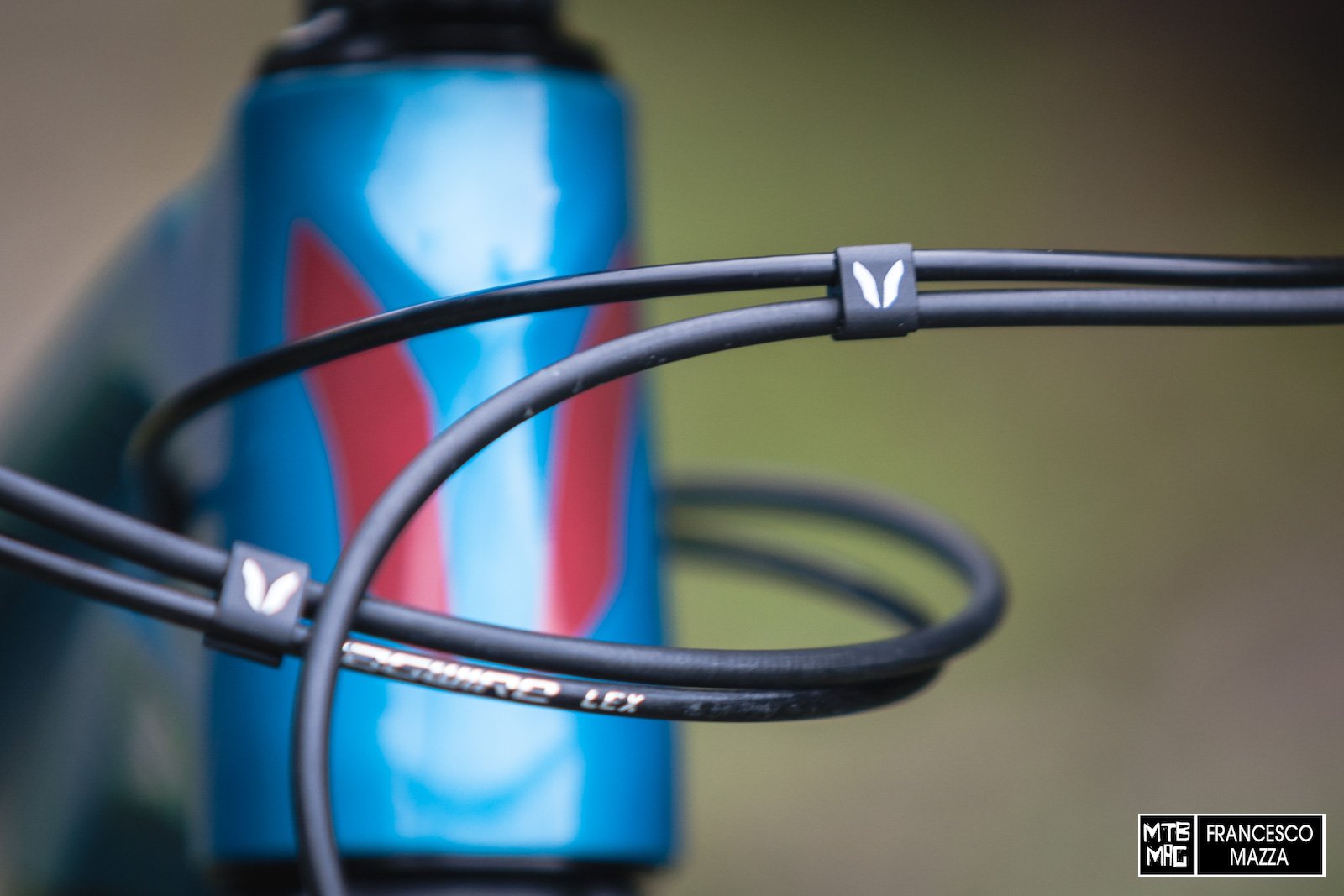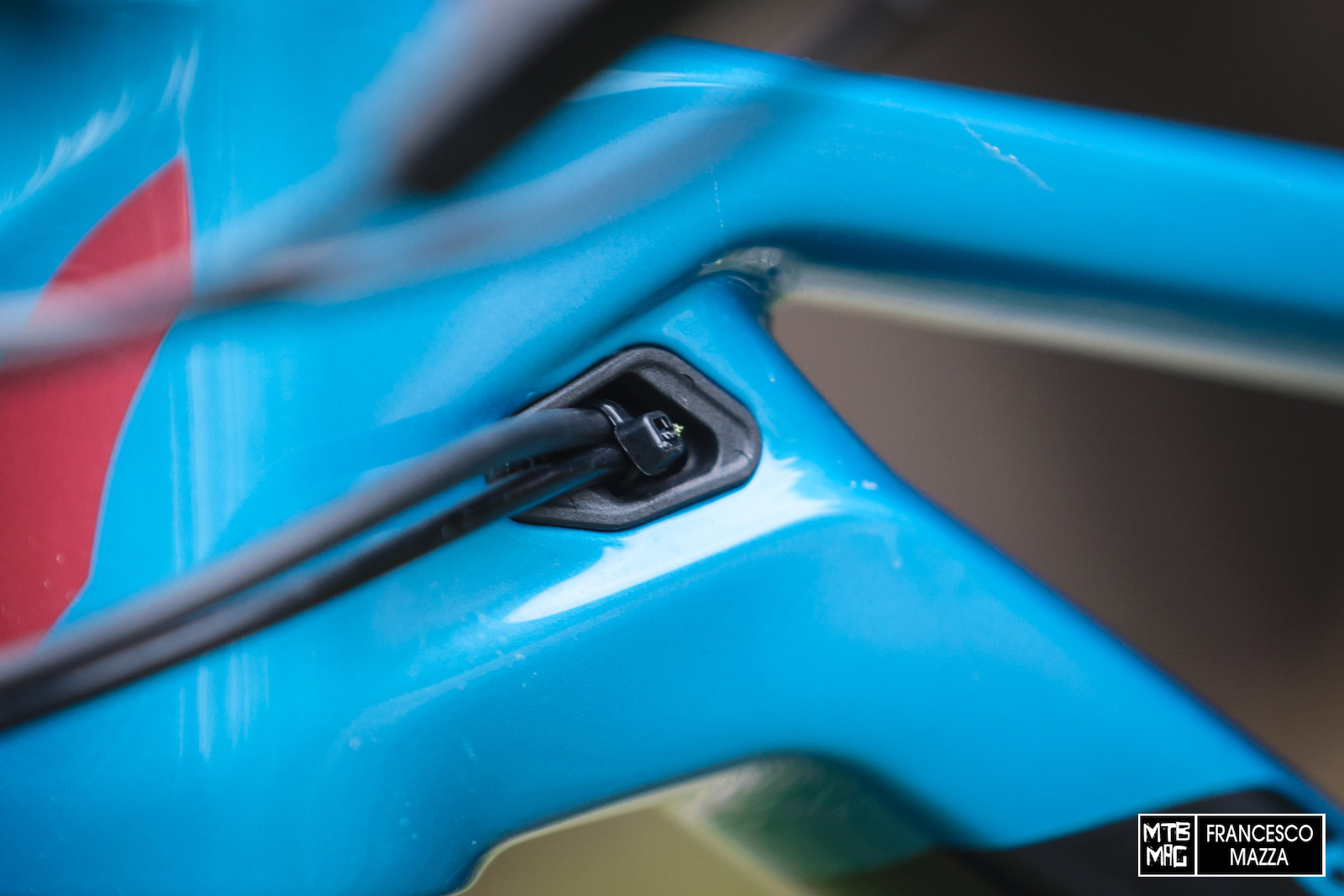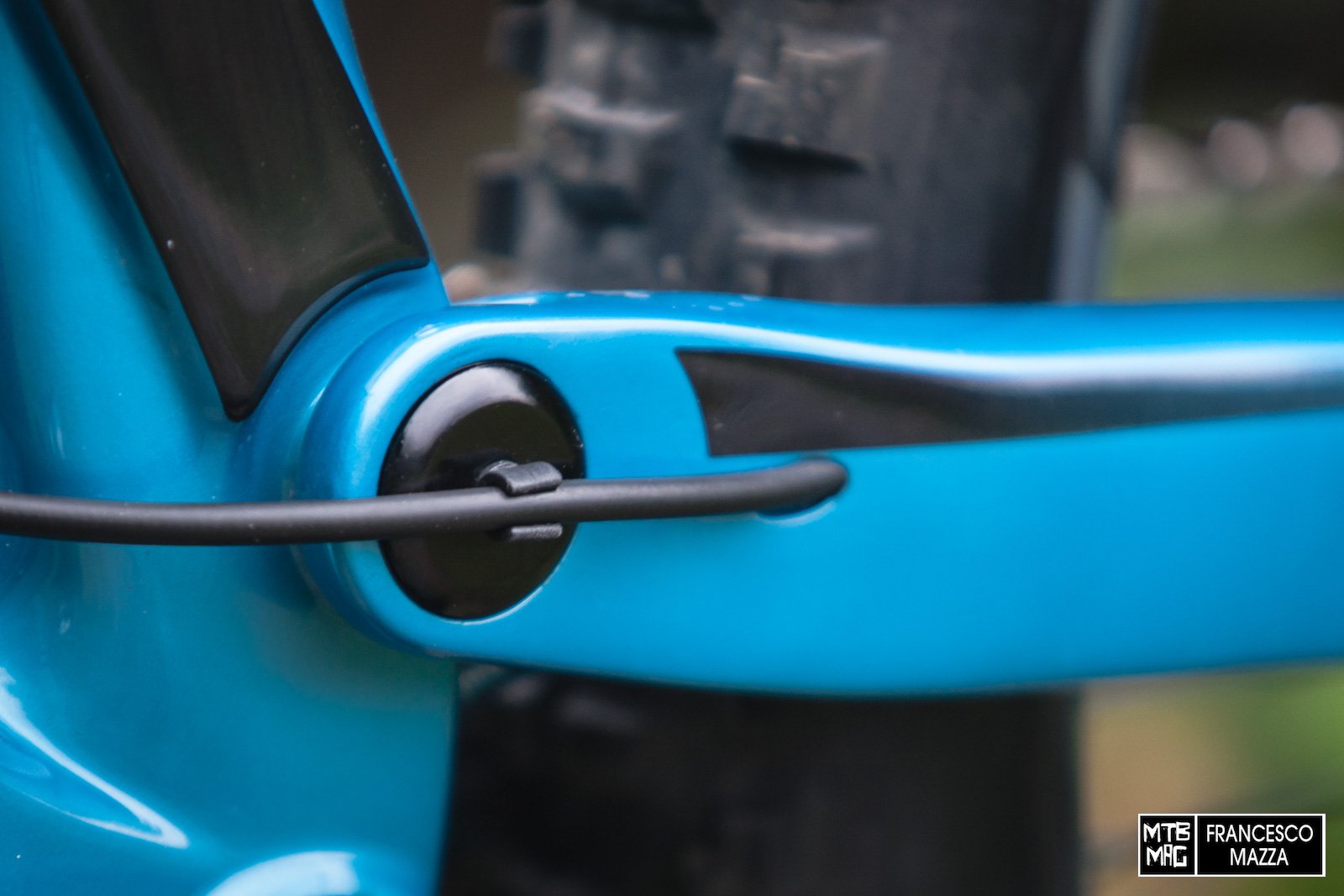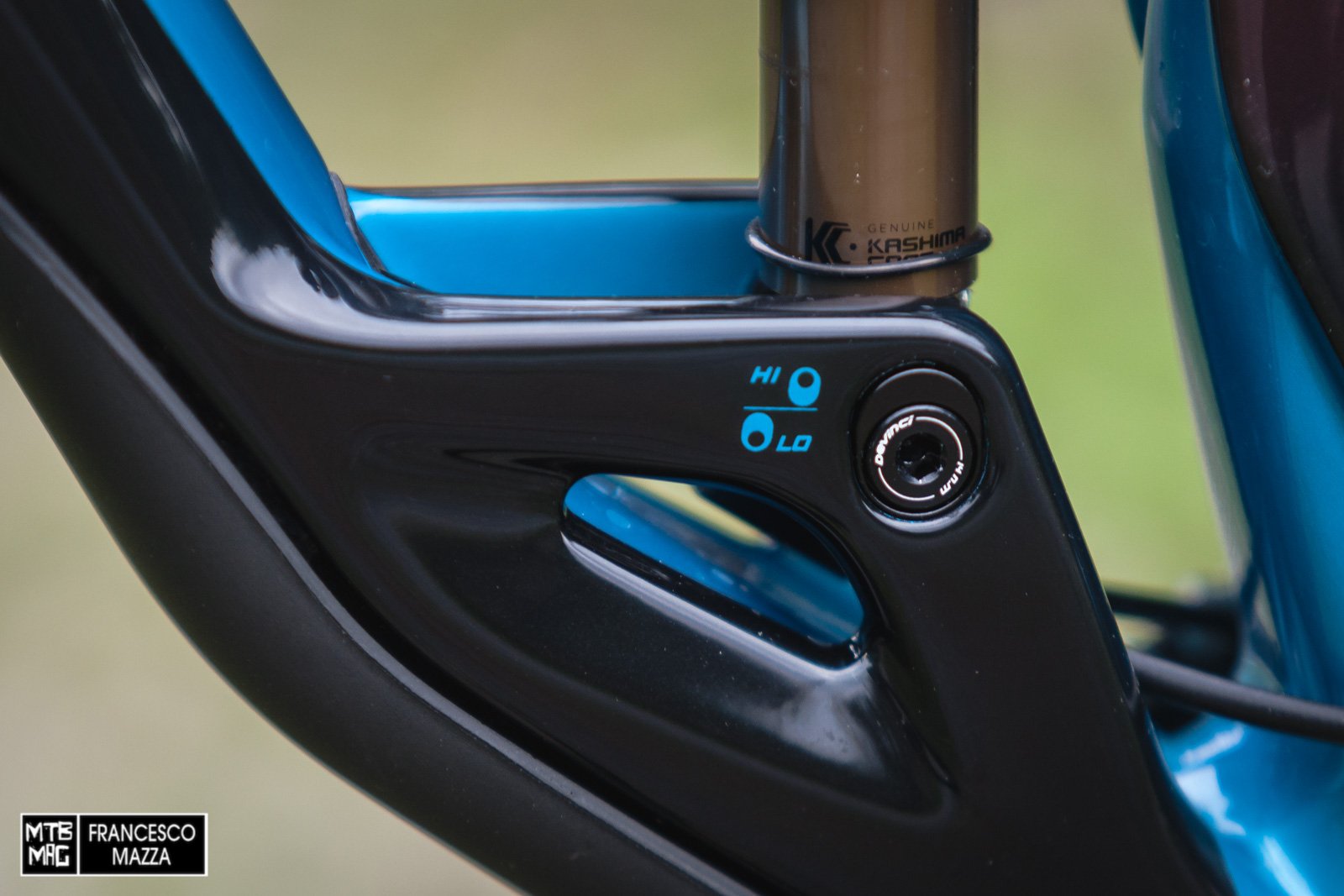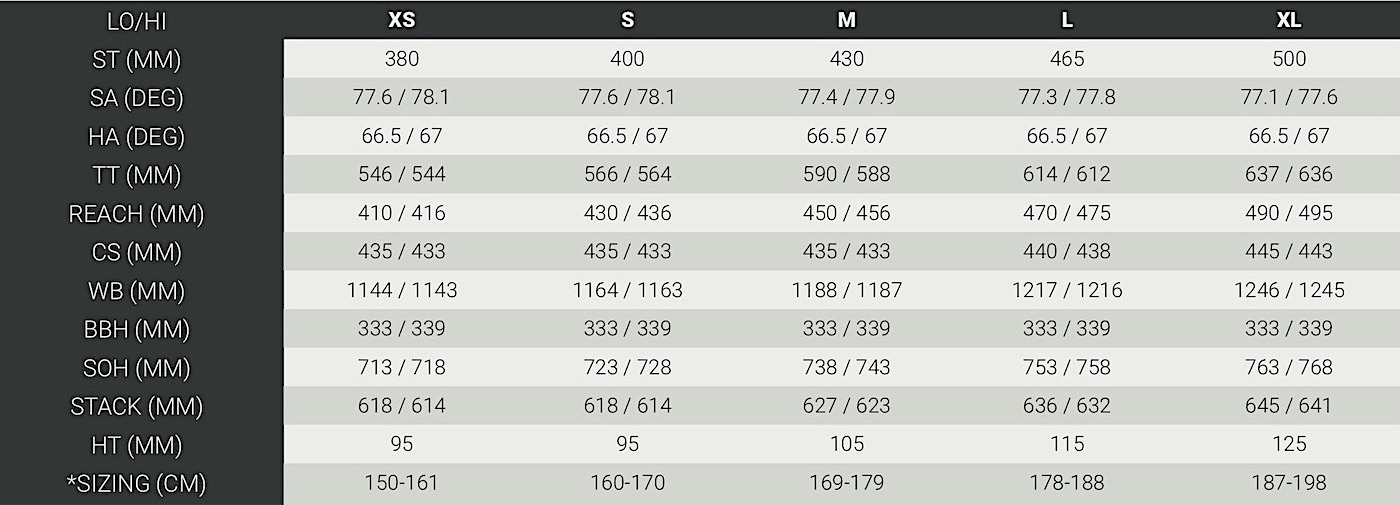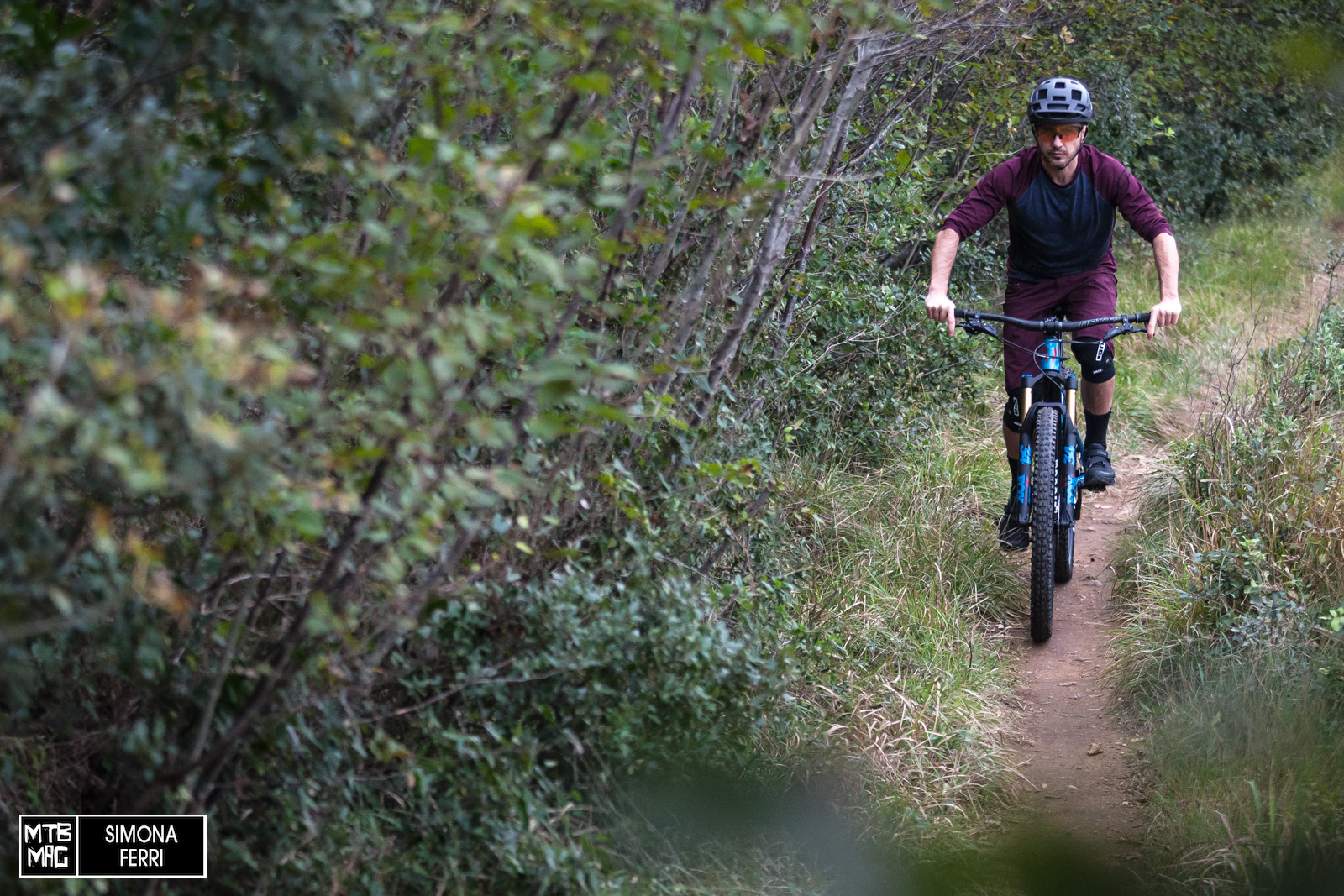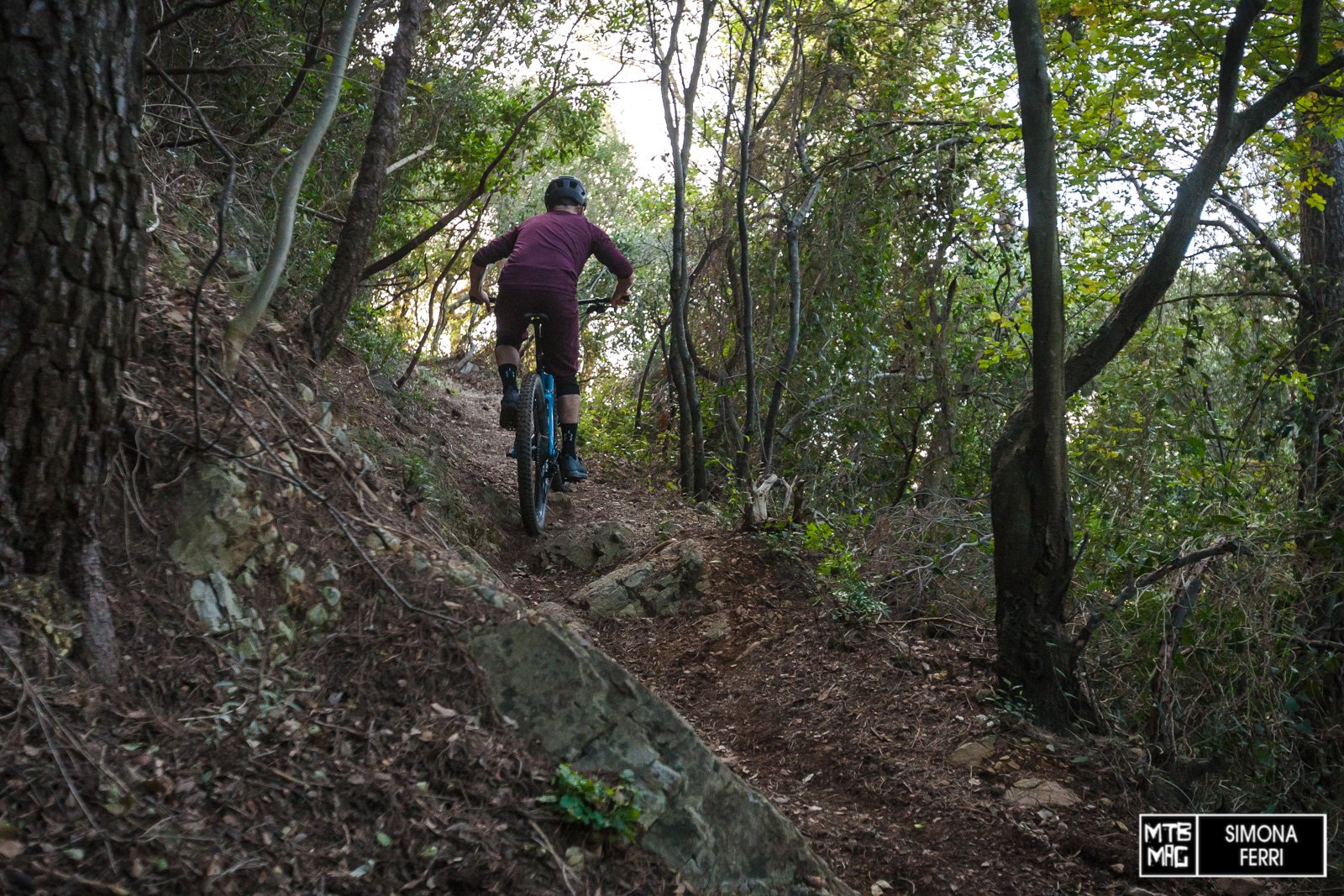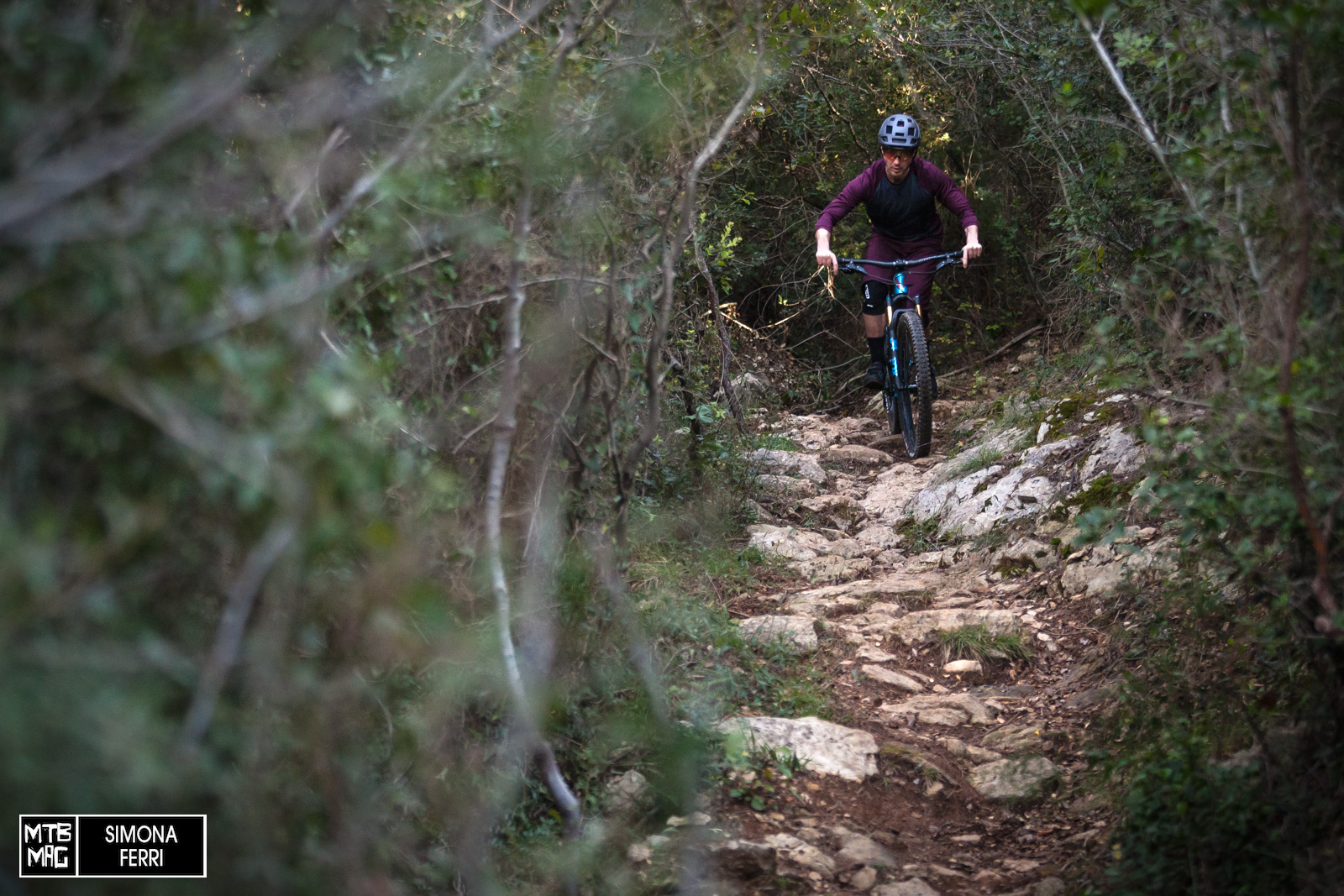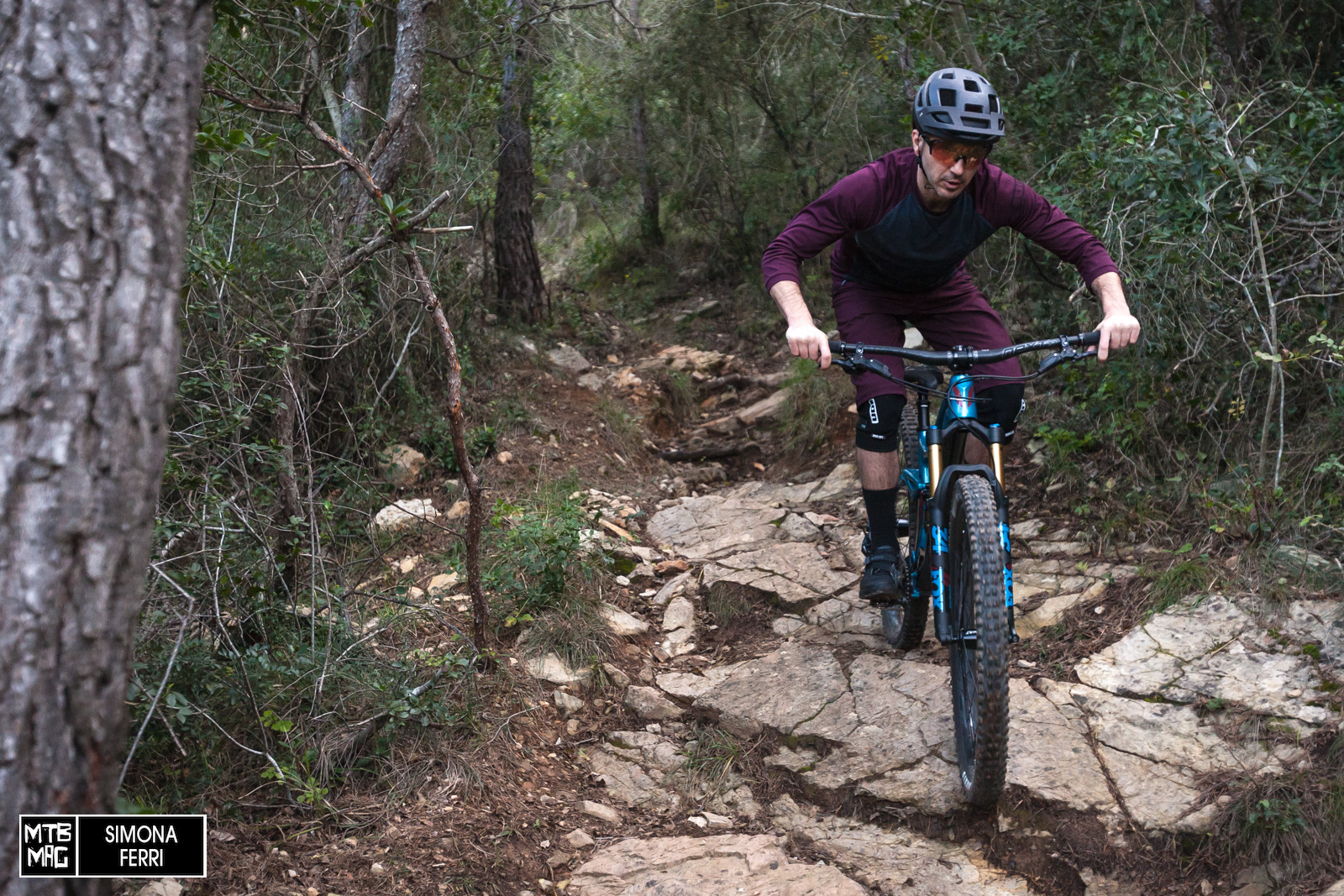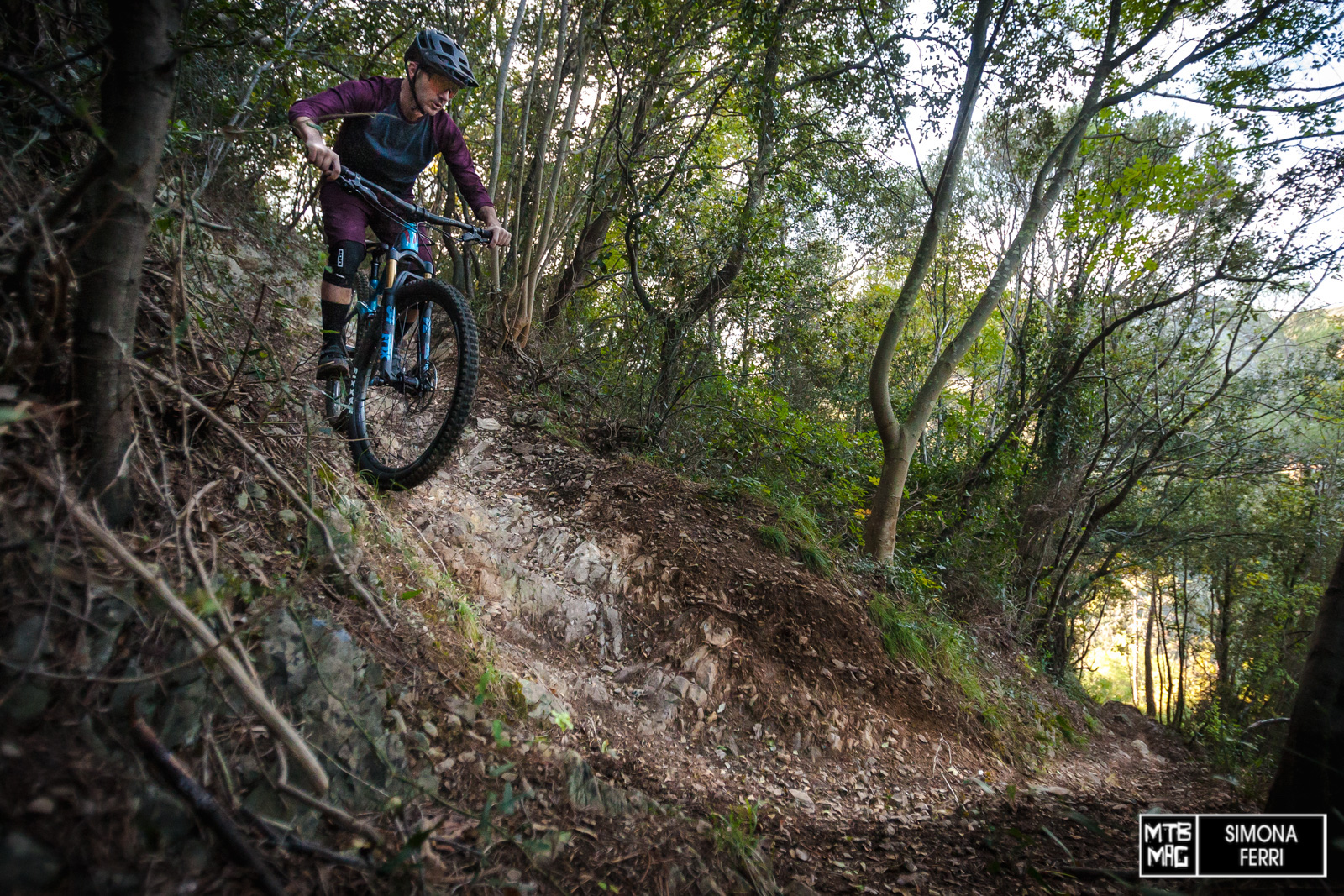[Tested] Devinci 2020 Django
At the beginning of September, Devinci presented the newest version of the Django, their trail bike which, as is traditional for the Canadian brand, shows a certain propensity for downhill fun. The new Django clearly takes on the lines of Troy, the all-mountain bike from the Devinci, creating a continuity of design within the range that we can assume will be followed by the next update of the Spartan. Equipped with 29-inch wheels, the 2020 Django offers 120mm of rear wheel travel, like the previous model, from which it differs however with 140mm of front travel instead of 130.
For the test, Devinci sent us a Django Carbon with the GX LTD build – this represents the second option in the range starting from flagship, formed by four levels with a carbon frame and two with aluminum alloy frames. The bike arrived in mid-September so I had almost three months to test the new Django thoroughly, under varying conditions and even bringing some changing to better understand it.
Details
- Frame material: carbon fiber
- Wheel format: 29 ″
- Adjustable geometries: yes
- Front travel: 140mm
- Rear travel: 120mm
- Rear hub: SuperBoost 157×12
- Front hub: 110×15 boost
- Rear shock eye to eye: 190x45mm
- Drivetrain: 1×12 (32t / 10-50)
- Bottle cage: yes
- Frameset only availability: yes
- Waranty: lifetime
- Claimed weight: 13.68kg (with tubes)
- Weight as measured with Park Tool scale: 13.52kg
As anticipated, the frame of the new Django sports a very elaborate and richly detailed design. The rear end and linkage, unlike the previous model, is now unidirectional carbon fiber, as is the front triangle of the frame. For the construction of the entire frame, Devinci uses a proprietary technology called DMC-G (Devinci Monocoque Carbon Gravity), which involves the use of EPS cores inside the molds and a special epoxy resin with added nanoparticles. The individual pieces of the Carbon frame are produced in Taiwan while the frame is assembled and finished in Canada. The frame is also available in 6061-T6 aluminum alloy. All frames are covered by a lifetime warranty.
Needless to say, the suspension system of the Django is the Split Pivot, patented by Dave Weagle and of which Devinci is the main licensee brand. It is based on a single pivot four bar linkage which sees a pivot located at the rear axle rotating in a concentric way with respect to the wheel’s axle, a system that effectively manages the anti-rise level to optimize the suspension behavior during braking. The entire suspension system rotates on bearings. The linkage in particular is equipped with double-row ball bearings and double gaskets which increase the rigidity thus aiding in a better functioning of the rear shock that is also better aligned under load, thus leading to reduction in the wear of the bearings themselves.
The suspension department of all Django 2020 bikes are entrusted to FOX. In detail, the GX LTD tested here features a Float DPS EVol rear shock in the Factory version. The Firm position offers very solid threshold which causes an almost total lockout. The suspension behavior proved to be rather linear even though it fitted as standard a 0.8in³ volume spacer inside the shock absorber. After several tests, gradually increasing the pressure with respect to the optimum sag, I replaced the standard volume spacer with one of 0.95in³, the largest available, so as to have a slightly greater progressivity and resistance to bottoming while reducing the pressure, for a sag between 25 and 30%, in order to achieve a better small bump sensitivity and a plush behaviour on rough terrains.
In combination with the rear shock absorber, the fork is also chosen from the flagship FOX range, to be precise it’s a 34 Float in the Factory version with a FiT4 hydraulic cartridge and an EVol air cartridge. As for the offset, Devinci has embraced the concept of the shorter numbers, choosing 44mm for the Django. So, as I did with the rear shock, with the fork after several tests I found it optimal to add an additional volume spacer to the two already present as standard. This as well as adding some extra pressure compared to the normal sag height, helped me gain better support in the central part of the stroke.
The wheels are supplied by RaceFace. Devinci has chosen the 35mm internal width version of the ARC rims, which are asymmetrical with 4.5mm offset for their 32 holes. The hubs are Vaults, both sturdy and smooth. As for the tires, all of their bikes are fitted with Maxxis products. Specifically, the GX LTD is equipped with a 2.5″ Minion DHF up front and a 2.4″ Minion DHR II at the rear, both in the 3C compound and with EXO Tubeless Ready casing. The Djangos are fitted with inner tubes but a couple of tubeless valves are supplied inside the package so that the wheels can be easily transformed, as there is already a sealing tape applied to the rims.
The drivetrain, as the name of the set-up suggests, is a SRAM GX Eagle with an aluminum crankset and a 32-tooth chainring mated to a 10-50 cassette that provides Django with a range that’s ideal for the intended usage. The adoption of the SuperBoost 157mm standard at the rear hub also necessitates a dedicated crankset with a suitable chain line, further outside of 3mm compared to the traditional Boost spacing. This means that the Q factor, the virtual distance between the outside of the crank tips, is also wider by 5mm. If on enduro bikes the wider Q factor is less noticeable in pedaling and could also provide an imperceptible stability advantage in downhill, on a bike that has to be pedaled for a long time like a trail bike, the different position of the feet is felt more for certain, but after only few rides you get used to that
The braking system is also entrusted to SRAM, with Guides, here in the updated G2 model which are clearly an improvement compared to the previous models, but still not completely free from overheating and fading. The test set that GX LTD is equipped with is the RSC version, therefore the most advanced in terms of adjustment, combined with Centerline 200mm diameter rotors at both wheels which, despite what one might think, are not oversized for 29″ trail bikes, but rather perfectly suited to compensating for the braking power of the G2s.
The cockpit combo is composed of top-of-the-line RaceFace components with a 35mm diameter bulge. It’s comprised of a Next R 35 carbon handlebar with a 20mm height and full 800mm width, therefore nodding toward descending. It’s supported by a Turbine R 35 stem at 50mm in length. Generally I prefer to use shorter stems, especially in combination with a handlebar so wide, for a smoother steering behavior and consequently a more precise and immediate control over the front end, both uphill and downhill. For this reason, after having thoroughly tested the Django with its standard stem, I replaced it with a 37mm long one, noting an improvement in terms of handling, especially in the technical bits.
Like the suspension, the seat post is also supplied by FOX, with their Transfer in the Performance version combined with a RaceFace Turbine R 1x remote. Devinci’s go to is with the remote mounted with its own collar but, given the presence of SRAM brakes, in the assembly phase I preferred to use the MatchMaker with the RaceFace remote. This cleaned up the ergonomics of the cockpit a bit as a bonus. As for the seat post travel, each size includes a specific amount: 100mm for the XS, 125mm for the S, 150mm for the M and 175mm for the L and XL sizes. The size M in the test therefore sees a 150mm but, as shown in the photograph, the seat tube would have allowed me to mount a longer travel option. The saddle is the Radar model, produced by SDG with the Devinci logo.
The protection placed at the critical points of the frame are generous, well thought out and of excellent quality. First of all, under the down tube there is a large, thick and sturdy polyurethane shell that protects it from any kind of impact, even the most violent. Unfortunately the bottom bracket shell remains uncovered, but during the test I never hit it. The shell has the aesthetic finesse of having its seat lowered inside the down tube, therefore, looking at the frame in profile, no protrusion is noticed from the addition of the protective material.
The same material is used to protect the lower portion of the chainstays. On the drivetrain side, the stay is protected both on the external and lower side and on the upper side by two distinct shells. The first serves to guard it from rubbing the heel of the shoe or from any rocks flung during driving. The second is obviously necessary to safeguard it from impacts from the chain and, thanks to the raised shapes in the polyurethane, it is useful in effectively reducing the noise level of the chain.
Also from the braking side of the rear there is the same chainstay protection that we find on the drive side, also in this case used to protect the rear end from possible rubbing of the shoe. Personally, it was never an issue for me while riding, because the SuperBoost rear hub corresponds with a greater Q factor at the cranks which therefore limits this risk.
The vertical position of the rear shock in the Django’s Split Pivot suspension system gives plenty of space for a full size bottle, so you can choose to use either a side-extension bottle cage or alternative Cageless or Fidlock coupling systems, as well as a traditional bottle cage, without interfering with the top tube despite it being particularly sloped.
To distribute the cables and hoses in an orderly and functional manner, maintaining a precise position once they have exited the brake levers and the handlebar controls, the Django has practical dedicated clips, marked with the Devinci logo.
Then the cables/hoses enter the frame through a large plastic door fixed to the frame by an Allen screw and provided with a slot to fix them by means of a clamp. The passage inside the front triangle of the Django is not sleeved but the wide openings both in entrance and exit allow the cables/hoses to pass in a rather easy way through the frame, an aspect that I can confirm given that the Django in test was delivered to me as a frame with all the separate components, so I personally assembled it.
To prevent them from making noise in the frame, the cable sections that run inside the downtube are sheathed in thick and soft neoprene tubes. Once out of the frame at the bottom of the down tube, the passage of the shifter cable and the brake hose, before branching towards the rear end, is managed neatly by a special support fixed to the lower eyelet of the rear shock. This also has the function of washer for each side in order to facilitate the insertion of the spacer adapters and make the operation on the geometry flip chips easier.
On the drive side, the routing passes inside the chainstay while on the brake side, before the cable enters the chainstay, the hose is held firmly in place by a C-clip clamp fixed to the inside of the axle. On both sides the passages inside the rear end are sleeved.
Geometry
As per Devinci tradition, the frame geometry can be adjusted using a flip chip. In the case of the new Django, this flip chip is placed in correspondence with the lower anchor shock eyelet, unlike the previous Django model in which the flip chip was positioned in the rocker link/seatstay junction. The adjustment of the geometry obtained by utilizing the flip chip is half a degree for the head and seat angles and 6mm for the height of the bottom bracket.
The geometry developed by Devinci for the Django is not particularly aggressive or progressive, on the contrary they are moderately conservative, balanced and neutral. This is a deliberate choice on the part of Devinci so that the new Django reflects its intended use as a trail bike, and is within the appeal of its target audience, ranging from the inexperienced rider to the pro with a more aggressive riding style.
Climbing
A 29-inch trail bike is expected to perform well as a climber and Django does not fall short of said expectations. Despite a slightly higher weight than average, the only drawback to Devinci’s latest addition, undoubtedly attributable to the downhill oriented spec, the Django lets you ride nicely on long climbs very efficiently and in a comfortable and very natural riding position. Except for a couple of attempts, I used the bike practically always in the Low position of the flip chips due to the more balanced geometry dimensions which are already rather conservative, while in the High position I found it a little limiting compared to the excellent potential that the Django offered.
On the technical climbs the Django has proven to be fun and capable, very agile and precise on the front end, something further improved after replacing the stem with a shorter one. On the steep punches it is planted on the ground at both wheels and is always snappy. The rear wheel offers excellent traction in the face of a slight pedaling oscillation of the suspension. The rear shock has an almost total lock that is very nice on the long grinding, mid grade climbs while in the intermediate position it is calibrated well enough to manage the stability of the suspension and at the same time offers just enough shock absorption.
Descending
If uphill the Django turned out to be intuitive right away, downhill I needed some time to be fully confident and find the most effective riding position. The head angle is not particularly aggressive so it is important not to load the front end too much and remain centered in the bike to make the most of the handling and precision that are the main strengths of the new Django. By adjusting the fork, I was nevertheless able to improve the response of the front end since the geometry also remained more stable, reducing the involuntary dive, and getting better support by adding some clicks on the compression knob, inserting an extra spacer and more pressure in the air chamber.
As far as the rear suspension is concerned, the adoption of a larger spacer was necessary to limit the frequent bottom out and in avoiding having to increase the air pressure in order not to affect the exceptional sensitivity of the suspension system. Unfortunately, the decrease in volume between the standard spacer (0.8in³) and the larger one (0.95in³) is minimal but nevertheless had a satisfactory effect, improving the compression curve of the suspension and its performance over the entire range of its travel. Particularly in the rough and fast segments I appreciated the sensitivity and absorption capabilities of the Django’s Split Pivot, which keeps the rear end very stable helping to gain speed thanks to its excellent overcoming of obstacles. A slightly more aggressive head angle would suit better the capability of the rear suspension to manage the high speeds, given that the limit of the bike in these kind of situations is the nervous front end.
The rear end on the other hand, is very precise in every situation, and is not at all nervous despite being particularly stiff and, above all, despite the relatively short travel. Keep in mind that we are talking about a trail bike with 120mm of travel that, no matter how powerful it is on the downhills, was not born to devour savage trails but to disentangle the average mountain trails, both technical and uneven, but within limits. In fact it was in these situations the Django shined with precision on both wheels in full control and with remarkable handling that made it very intuitive and a pleasure to ride, especially with a stem shorter than the standard one.
Overall
The new Django is at ease in the role of the mini-enduro but it is best suited to a rider looking for a versatile bike that shines in technical trails, both uphill and downhill. It prefers a flow riding style, not too nervous, reciprocating with maneuverability and precision, but it can also be aggressive in relation to the intended use. The quality of the construction and the attention to detail are of a very high standard and the build is appropriate to the lively character of the bike.
Specs and prices
Django Carbon 29 X01 – € 8.699
Django Carbon 29 GX LTD – € 6.099
Django Carbon 29 GX – € 5.399
Django Carbon 29 NX – € 4.599
Django Carbon 29 frame – € 3.299
Django 29 GX 12s – € 3.699
Django 29 SX / NX 12s – € 2,899
The post [Tested] Devinci 2020 Django appeared first on MTB-MAG.COM.

